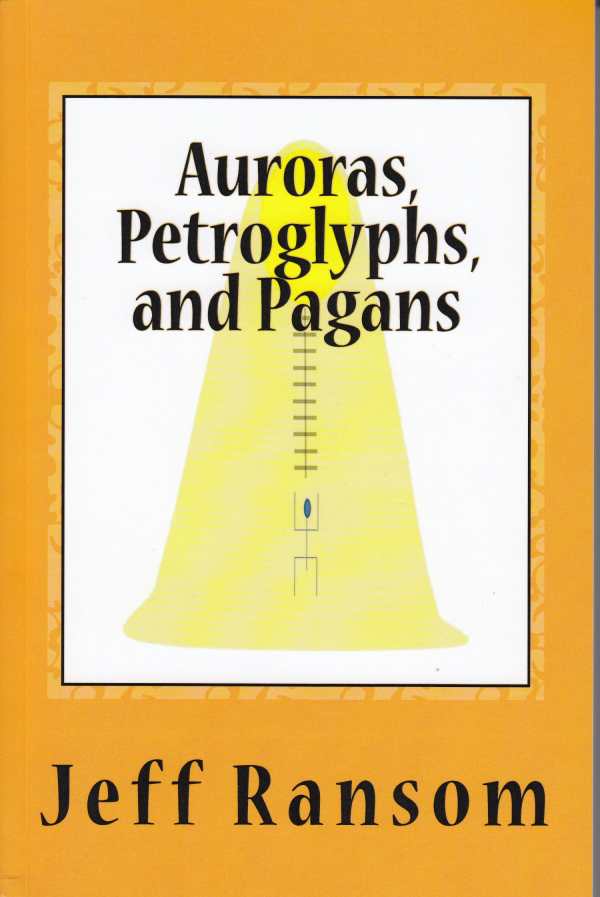Auroras, Petroglyphs, and Pagans
Ransom’s book draws upon extensive research to tie varied belief systems to scientific phenomena.
In the extensively researched Auroras, Petroglyphs, and Pagans, Jeff Ransom argues that pagan religions were inspired by celestial phenomena caused by plasma in the atmosphere.
Across the world, a number of ancient civilizations display similar types of religious symbols despite seemingly never having been in contact with one another. How can that be? This book argues that ancient myths and mythologies developed because of celestial phenomena observable across the globe that, at the time, could not be explained. These celestial phenomena, it says, could have become visible because Earth encountered an object from space.
The book’s scientific foundation is clear; subscribers to theories of the involvement of extraterrestrials in the development of human civilization are dismissed. The book makes use of research in astrophysics, astronomy, plasma physics, and comparative linguistics. It does not make use of research in history, archaeology, and critical religious studies. The result is a book that builds a case based on a thesis that has already been scientifically addressed by others, using evidence that does not wholly support the book’s own argument. The book does not discuss the religious aspects of ancient symbols, opting instead for a visual comparison of imagery found in ancient art and auroras recreated within a laboratory setting.
The book’s foundation is in theories of plasma physics. It argues that the auroras, better known as the Northern and Southern Lights, create shapes in the atmosphere that are similar to ancient rock carvings, and uses Native American rock art as an example. Still—apart from a reference to the plasma used in plasma televisions—the book does not include a scientific discussion of plasma, and readers unfamiliar with its physical properties are left none the wiser.
The book’s intentions are unclear. It devotes a significant amount of space to arguing against a scientific view of the solar system prevalent before the year 1950, which is today considered obsolete. Its counterpoint thus stands against an abandoned scientific view.
The reading experience is uneven. The text is grounded by an impressive amount of research, with an extensive bibliography that covers nearly thirty pages. Chapters that discuss the influence of plasma and auroras on ancient mythology are based on evidence that has been compiled from all over the globe, if mainly based on similarities rather than correlations. Some chapters read like a historiographic compilation of common knowledge. The writing style is approachable, though, and avoids overly scientific jargon.
Auroras, Petroglyphs, and Pagans ably collects research supporting established scientific principles.
Reviewed by
Erika Harlitz Kern
Disclosure: This article is not an endorsement, but a review. The publisher of this book provided free copies of the book and paid a small fee to have their book reviewed by a professional reviewer. Foreword Reviews and Clarion Reviews make no guarantee that the publisher will receive a positive review. Foreword Magazine, Inc. is disclosing this in accordance with the Federal Trade Commission’s 16 CFR, Part 255.

